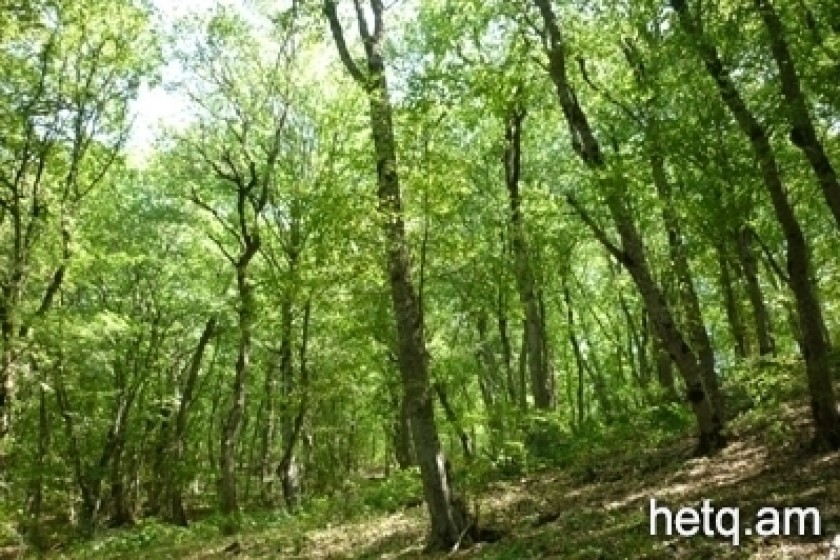
Requiem for Armenia's forests
“I believe that it has come to the point where people who care about nature and the fate of future generations should sound the alarm, call on international organizations, picket the roads. Perhaps, after all, this alarm will reach those deaf people who give permission to destroy the biosphere. We are leaving generations to come with a global problem which they will not be able to solve,” says Hovik Bekchyan. When he graduated from theAstrakhan(Russia) Forestry Institute in 1961, Hovik Bekchyan returned to his native Lori to plant, tend, and research the forests precious toArmenia. He resigned as director of the Gugark Forestry Service in 1993, unable to bear the mass destruction of tens of hectares of newly seeded and young forests near Vanadzor that he himself had planted.
Forest tracts inArmeniaare distributed very unevenly. 68% of the forestland is in the northeastern zone, 2% is in the central, 28% is in the southern, and 6% is in the northern zone of the republic. In the past, parts of today’s Gegharkunik, Shirak and Ararat regions were covered with forests. More recently, the forested land of historicalArmeniahas decreased dramatically, and today, there is only half as much as there was 200 years ago. Experts say that the main cause of the disappearance ofArmenia’s forests is human activity.
Armeniais now one of the world’s most forestless countries, with 0.12 hectares of forest areas per capita. The forest fund of the republic is 460,000 hectares, of which 334,000 hectares are covered with forests. InArmenia, forests make up 11.2% of the total territory; inTurkeythis figure is 14%, inGeorgia37.4%, in all ofAfrica25%. Experts estimate that the overall wood resource of the forests ofArmeniais 40 million cubic meters and the average annual growth is 354,000 cubic meters. International standards prohibit industrial felling in such forests.
Armenian forests are divided into three groups, according to significance:
1. Forests of protective significance
-water protective (forests near rivers, lakes, reservoirs)
-counter-erosive (soil-protective forest areas)
2. Forests of social significance
-sanitary-hygienic (forests near water pipe-lines, and sanitary protection zones)
-health protective forests
3. Forests of special significance
-forests in preserved areas
Eighty percent of the forests inArmeniaare of purely protective significance. In such forests, only preventive felling, aimed at the health and regeneration of trees, is permitted. Almost 64% of the forest fund ofArmeniais in the Lori and Tavush marzes, and 13% in the Syunik marz.
Experts calculate that over the last ten years almost 800,000 square meters of wood annually have been cut for heating purposes, under the guise of preventive felling. Forested area constituted 30-31% of the Lori region before the energy crisis. Now, Hovik Bekchyan says, this is down to 10-15%. Moreover, according to a study conducted by the ecology and agriculture department of the Lori Marzpet’s (governor’s) Office where Bekchyan works, 30,000 of the region’s total of 98,700 hectares of forest have been completely destroyed. In other places, intensive deforestation is taking place to this day. The same study shows that the 800-hectare tall pine forest in the Gugark forestry zone was completely destroyed and the area was set on fire to conceal the crime.
Over the years no planting has taken place parallel to the intensive cutting. The 60 hectares of forest planting implemented over the last two years is too negligible to represent any real improvement of situation. In Soviet times, 250-300 hectares of forest was planted per year within each forestry zone in the marz. Today, planting is usually a farce. While music plays, officials gather and plant couple of trees for the benefit of video cameras and journalists, and then go off to banquets. In the areas where trees were planted years ago, the survival rate of saplings was just 5% or even 0%. The law, meanwhile, requires that newly planted forests be tended for at least five years. But today, even forests that were painstakingly planted decades ago are being heedlessly destroyed.
Of course, trees should be cut down in regulated volumes equal to the annual growth of the forests in question. But this basic of forestry seems to have been forgotten long ago in Lori.
 Videos
Videos Photos
Photos
Write a comment